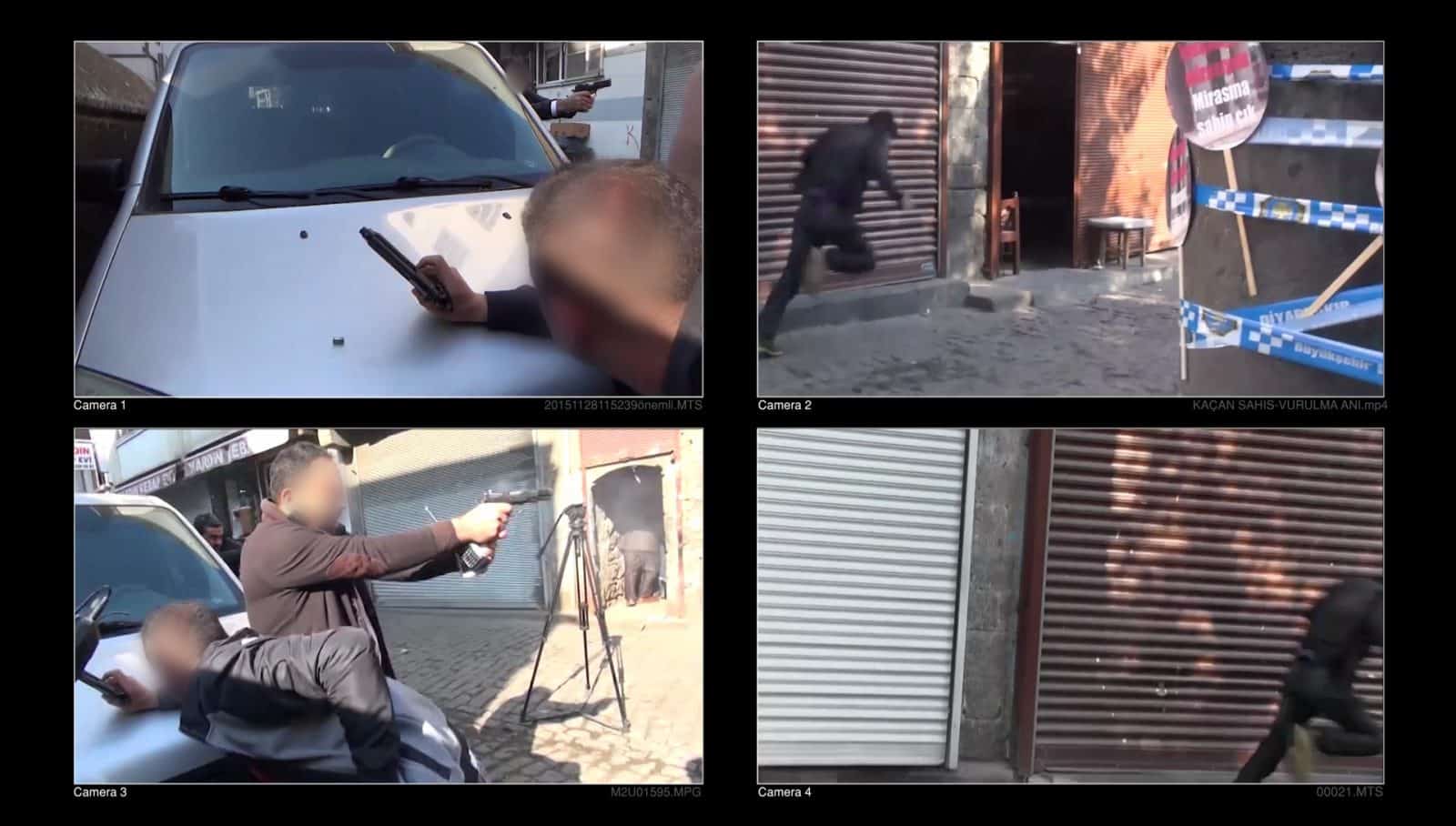Commissioned By
Additional Funding
Collaborators
Methodologies
Forums
On 28 November 2015, Tahir Elçi, a prominent Kurdish human rights lawyer, was shot and killed during a press conference in the city of Diyarbakır, Turkey.
Elçi’s death came during a time of rising tensions in the country, against the backdrop of the decades-long conflict between Turkish security forces and the Kurdistan Workers’ Party, or PKK, a militant political movement dedicated to achieving Kurdish autonomy in Turkey’s southeast.
By late 2015, a major peace process had recently collapsed into violence. Elçi had been a prominent voice for calm and de-escalation, but after his death, the situation in Diyarbakır deteriorated into humanitarian catastrophe, leaving hundreds of civilians dead and thousands displaced.
It was not only the manner of his death that fuelled rumours and conspiracy theories. The early days of the investigation into his death were chaotic, and in three years since the killing, no one has been charged.

In 2016, the Diyarbakır Bar Association, of which Elçi was chairman at the time of his death, asked Forensic Architecture to examine the evidence in their possession, and to independently investigate the circumstances of his death. As Elçi was killed during a press conference, multiple cameras captured the moments leading up to his death.
In December 2018, the results of our analysis were submitted to the public prosecutor in Diyarbakır, with the intention of challenging the Turkish state to reinvigorate its own investigation.
In February 2019, we published an extended report on our investigation through openDemocracy, exploring in depth some of the wider context behind Elçi’s death, and our investigation. You can read that here: English/Türkçe.
Update
 03.2020
03.2020
Our investigation identified three police officers, one of whom very likely fired the shot that killed Elçi, in contradiction to the claims made by state officials that two Kurdish militants were responsible for the killing.
In the years since Elçi’s death, the case had been passed between a number of prosecutors, and was believed to be effectively mothballed. However, in March 2020, charges were finally issued in the case. The public prosecutor submitted a 40-page indictment to the Diyarbakır Criminal Court, which explicitly referenced our own findings. However, significant concerns surround that indictment, its contents, and the possible motivations behind it.
The indictment charges the three officers identified in our report with involuntary manslaughter. It accuses those officers of negligence, though it repeatedly outlines the prosecutor’s interpretation of the incident: that the officers only intended to ‘neutralise’ the two militants from the PKK, a Kurdish separatist group, who ran through the scene on Yenikapı Street, precipitating the shooting that led to Elçi’s death. The charges against the officers carry a possible prison sentence of between two and six years.
Additionally, however, one of the militants, Uğur Yakışır, is charged with voluntary manslaughter. According to the prosecutor: ‘Given that… Tahir Elçi’s position at the moment of death could not be clearly determined, that the bullet that caused his death could not be recovered, and that there is no footage of the moment he was shot, it is possible that one of the bullets from Uğur Yakışır and [the second militant] Mahsum Gürkan’s guns could have hit Tahir Elçi.’
This conclusion is in direct contradiction of our own findings. According to our own investigation, none of the forty gunshots that are visible or audible during the period of the shooting (during which time multiple cameras were recording the scene) were fired by the two PKK militants. Rather, the only shots that could have been that which killed Elçi were fired by one of the three officers we identified.
While we are pleased to see the processes of justice moving forward, and agree with the prosecutor that one of the three police officers identified is likely responsible for Elçi’s death, we strongly reject the prosecutor’s analysis that Yakışır or Gürkan could have fired the fatal shot. That our report has been cited at all is encouraging; that its central conclusion has been overlooked and manipulated is of great concern.
There are additional problems with the indictment. It does not only cover the killing of Elçi, but also the killing of two police officers nearby, just moments before. Yakışır and Gürkan (who is believed to have died since 2015) are charged with the murder of those officers; as described in our original investigation, CCTV captures the two militants opening fire on the officers, before fleeing down a street which would take them directly past Elçi. The charges may as such be reasonable, but there is no justification for their being associated with the charges relating to Elçi’s death. The two killings are separate incidents, to be weighed separately. Elçi’s lawyers petitioned the court to refuse the indictment on the basis that it misidentifies the crime and that it brings together perpetrators and incidents that do not have a strict legal connection. The court nevertheless admitted the indictment.
The first hearings are anticipated to go ahead in October 2020, after the Turkish Ministry of Justice in June 2020 rejected the public prosecutor’s request to move the court proceedings out of Diyarbakır.